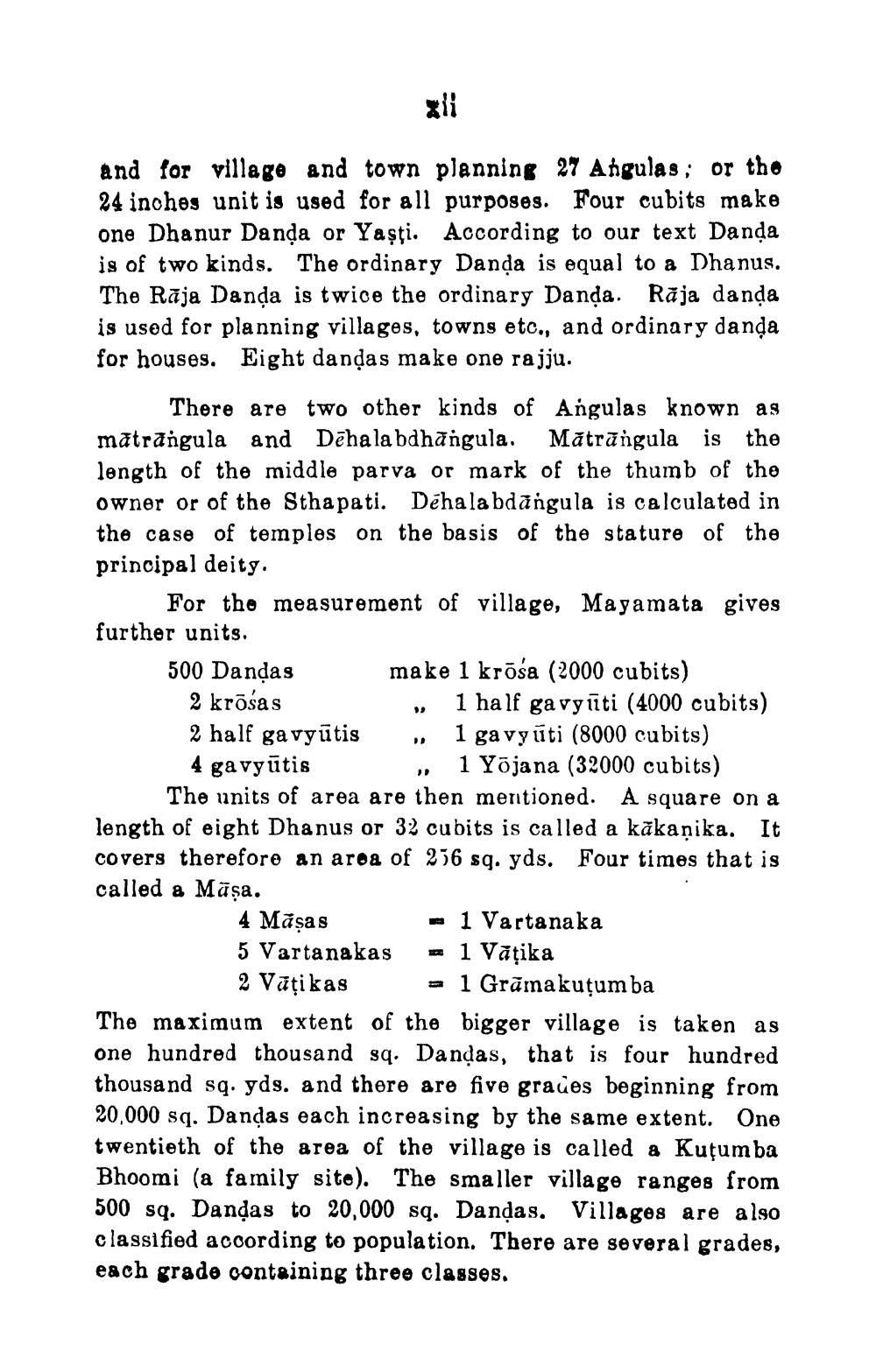________________
and for village and town planning 27 Angulas; or tho 24 inches unit is used for all purposes. Four cubits make one Dhanur Danda or Yaşți. According to our text Danda is of two kinds. The ordinary Danda is equal to a Dhanus. The Rāja Danda is twice the ordinary Danda. Rāja danda is used for planning villages, towns etc., and ordinary danda for houses. Eight dandas make one rajju.
There are two other kinds of Angulas known as matrangula and Dēhalabdhăngula. Mātrāngula is the length of the middle parva or mark of the thumb of the owner or of the Sthapati. Dėhalabdãngula is calculated in the case of temples on the basis of the stature of the principal deity.
For tho measurement of village, Mayamata gives further units.
500 Dandas make 1 krāsa (2000 cubits) 2 krāsas
1 half gavyati (4000 cubits) 2 half gavyūtis 1 gavyūti (8000 cubits) 4 gavyūtis
, 1 Yojana (32000 cubits) The units of area are then mentioned. A square on a length of eight Dhanus or 32 cubits is called a kūkanika. It covers therefore an aroa of 256 sq. yds. Four times that is called a Māsa. 4 Māsas
- 1 Vartanaka 5 Vartanakas - 1 Văţika
2 Vātikas - 1 Grāmakuțum ba The maximum extent of the bigger village is taken as one hundred thousand sq. Dandas, that is four hundred thousand sq. yds. and there are five građes beginning from 20,000 sq. Dandas each increasing by the same extent. One twentieth of the area of the village is called a Kutumba Bhoomi (a family site). The smaller village ranges from 500 sq. Dandas to 20,000 sq. Dandas. Villages are also classified according to population. There are several grades, each grade containing three classes.




